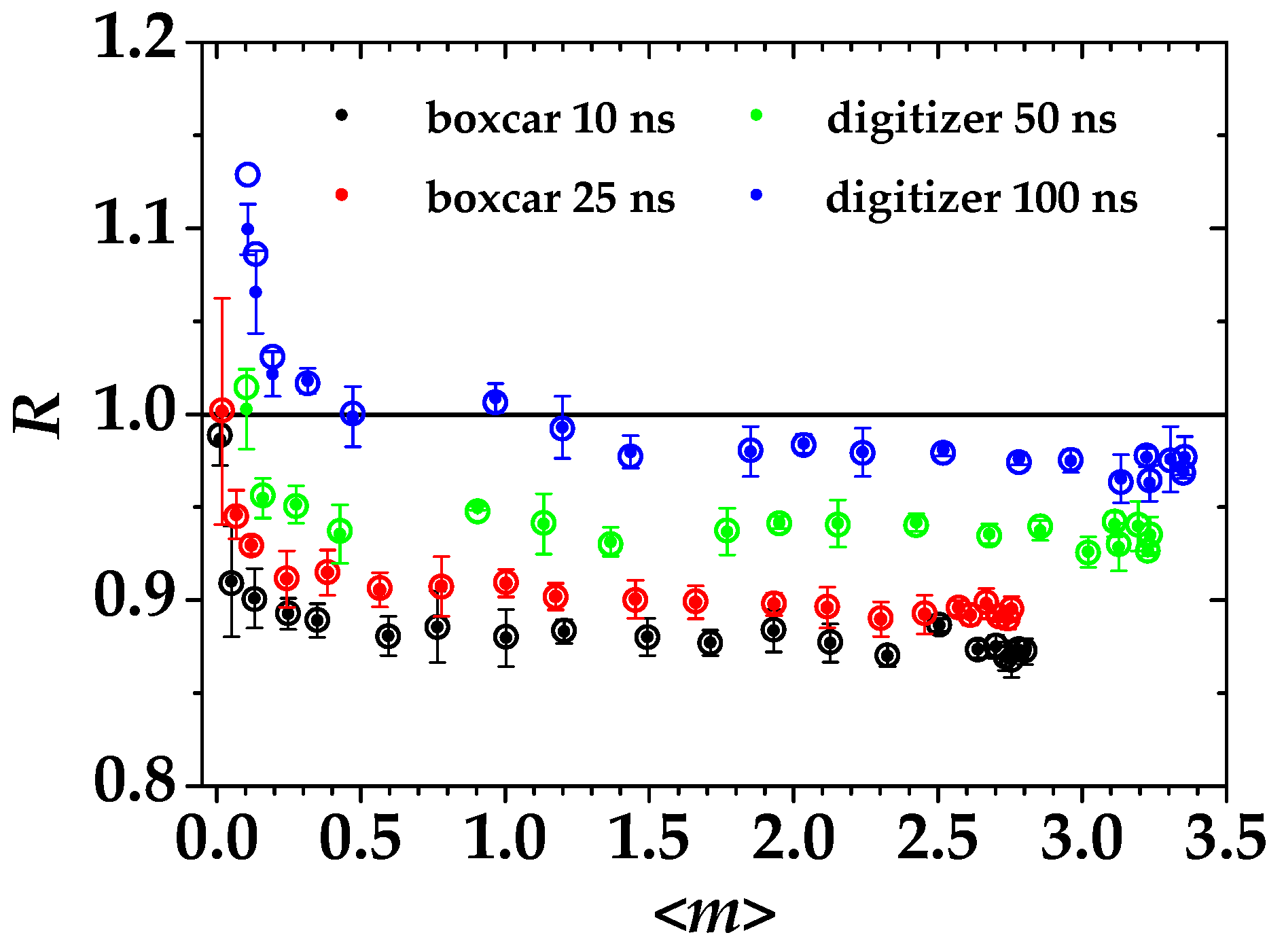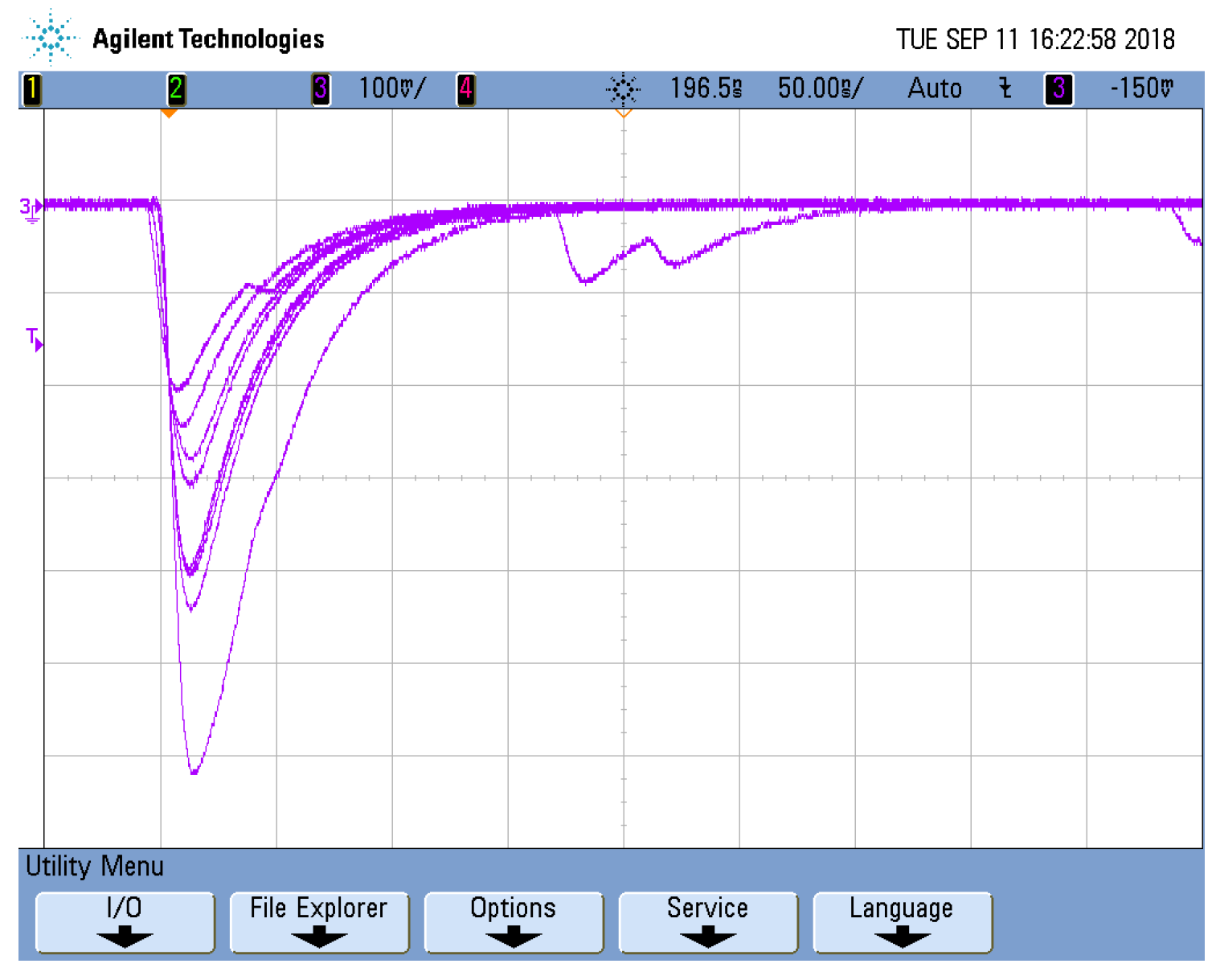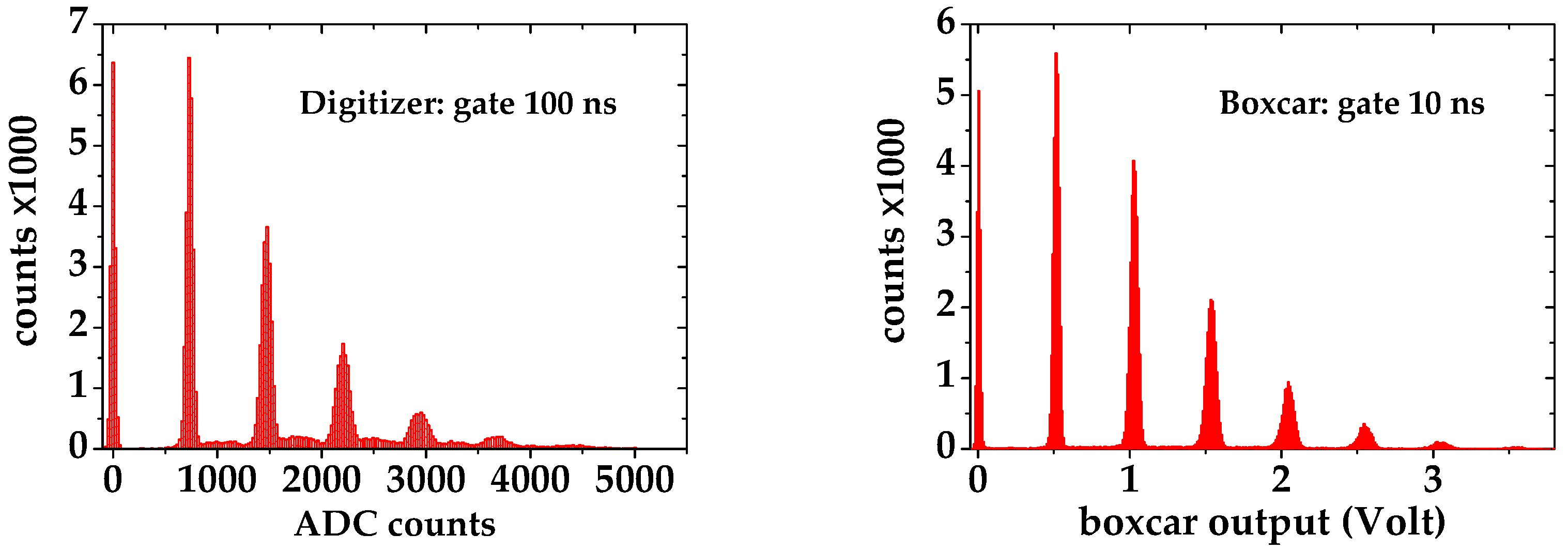Measuring Nonclassicality of Mesoscopic Twin-Beam States with Silicon Photomultipliers †
Abstract
1. Introduction
2. Results
3. Discussion
4. Materials and Methods
References
- Akindinov, A.V.; Martemianov, A.N.; Polozov, P.A.; Golovin, V.M.; Grigoriev, E.A. New results on MRS APDs. Nucl. Instrum. Methods Phys. Res. A 1997, 387, 231–234. [Google Scholar] [CrossRef]
- Afek, I.; Natan, A.; Ambar, O.; Silberberg, Y. Quantum state measurements using multipixel photon detectors. Phys. Rev. A 2009, 79, 043830. [Google Scholar] [CrossRef]
- Kalashnikov, D.A.; Tan, S.H.; Iskhakov, T.S.; Chekhova, M.V.; Krivitsky, L.A. Measurement of two-mode squeezing with photon number resolving multipixel detectors. Opt. Lett. 2012, 37, 2829–2831. [Google Scholar] [CrossRef] [PubMed]
- Ramilli, M.; Allevi, A.; Chmill, V.; Bondani, M.; Caccia, M.; Andreoni, A. Photon-number statistics with silicon photomultipliers J. Opt. Soc. Am. B 2010, 27, 852–862. [Google Scholar] [CrossRef]
- Chesi, G.; Malinverno, L.; Allevi, A.; Santoro, R.; Caccia, M.; Martemiyanov, A.; Bondani, M. Optimizing Silicon photomultipliers for Quantum Optics. Sci. Rep. 2019, 9, 7433. [Google Scholar] [CrossRef] [PubMed]
- Chesi, G.; Malinverno, L.; Allevi, A.; Santoro, R.; Caccia, M.; Bondani, M. Measuring nonclassicality with Silicon photomultipliers. Opt. Lett. 2019, 44, 1371–1374. [Google Scholar] [CrossRef] [PubMed]
- Available online: http://www.hamamatsu.com/us/en/S13360-1350CS.html (accessed on 12 November 2019).
- Available online: http://www.hamamatsu.com (accessed on 12 November 2019).
- Degiovanni, I.P.; Genovese, M.; Schettini, V.; Bondani, M.; Andreoni, A.; Paris, M.G.A. Monitoring the quantum-classical transition in thermally seeded parametric down-conversion by intensity measurements. Phys. Rev. A 2009, 79, 063839. [Google Scholar] [CrossRef]
- Lamperti, M.; Allevi, A.; Bondani, M.; Machulka, R.; Micha´lek, V.; Haderka, O.; Perˇina, J., Jr. Optimal sub-Poissonian light generation from twin beams by photon-number resolving detectors. J. Opt. Soc. Am. B 2014, 31, 20. [Google Scholar] [CrossRef]
- Allevi, A.; Andreoni, A.; Beduini, F.; Bondani, M.; Genoni, M.G.; Olivares, S.; Paris, M.G.A. Conditional measurements on multimode pairwise entangled states from spontaneous parametric downconversion. Eur. Phys. Lett. 2010, 92, 20007. [Google Scholar] [CrossRef]
- Allevi, A.; Bondani, M. Nonlinear and quantum optical properties and applications of intense twin-beams. Adv. At. Mol. Opt. Phys. 2017, 66, 49–110. [Google Scholar]




Publisher’s Note: MDPI stays neutral with regard to jurisdictional claims in published maps and institutional affiliations. |
© 2019 by the authors. Licensee MDPI, Basel, Switzerland. This article is an open access article distributed under the terms and conditions of the Creative Commons Attribution (CC BY) license (https://creativecommons.org/licenses/by/4.0/).
Share and Cite
Chesi, G.; Malinverno, L.; Allevi, A.; Santoro, R.; Caccia, M.; Bondani, M. Measuring Nonclassicality of Mesoscopic Twin-Beam States with Silicon Photomultipliers †. Proceedings 2019, 12, 48. https://doi.org/10.3390/proceedings2019012048
Chesi G, Malinverno L, Allevi A, Santoro R, Caccia M, Bondani M. Measuring Nonclassicality of Mesoscopic Twin-Beam States with Silicon Photomultipliers †. Proceedings. 2019; 12(1):48. https://doi.org/10.3390/proceedings2019012048
Chicago/Turabian StyleChesi, Giovanni, Luca Malinverno, Alessia Allevi, Romualdo Santoro, Massimo Caccia, and Maria Bondani. 2019. "Measuring Nonclassicality of Mesoscopic Twin-Beam States with Silicon Photomultipliers †" Proceedings 12, no. 1: 48. https://doi.org/10.3390/proceedings2019012048
APA StyleChesi, G., Malinverno, L., Allevi, A., Santoro, R., Caccia, M., & Bondani, M. (2019). Measuring Nonclassicality of Mesoscopic Twin-Beam States with Silicon Photomultipliers †. Proceedings, 12(1), 48. https://doi.org/10.3390/proceedings2019012048





